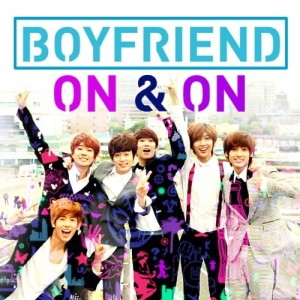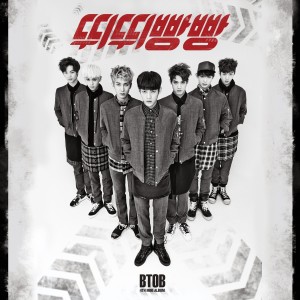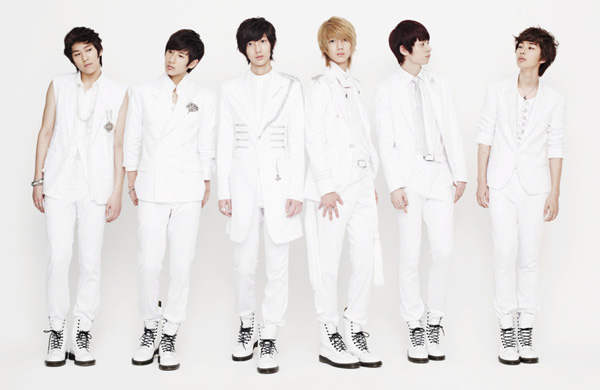 I wrote in 2012 about the benefits of an entertainment company to house established male and female idol groups, also known as sibling groups, and how having established sibling groups were an indicator of success that companies were heading in the right direction. At the time of the article, most smaller companies only had one established idol group and were in the process of debuting or nourishing an opposite gender counterpart. Nearly two years later, let’s just say some companies have fared much better than others.
I wrote in 2012 about the benefits of an entertainment company to house established male and female idol groups, also known as sibling groups, and how having established sibling groups were an indicator of success that companies were heading in the right direction. At the time of the article, most smaller companies only had one established idol group and were in the process of debuting or nourishing an opposite gender counterpart. Nearly two years later, let’s just say some companies have fared much better than others.
A prime example of one of these emerging companies that successfully executed the plan of establishing a successful sibling group alongside their original flagship idol group is TS Entertainment. Its rapid industrialization model of promoting B.A.P in a time of rabid boy band debuts has paid off and the band’s consecutive Live on Earth world tours have allowed the group to pull their weight alongside their sister group, Secret.
However, not all companies which pursued this path have fared a similar fate. As a result, there are now a slew of sibling groups which do not pull their own weight, and are thus mooching off the achievements of their more successful sibling(s) in order to remain in existence. These are the siblings that you wish were never born, the ones you don’t invite to extended family get-togethers, the black sheeps of the family who you just want to keep locked up in the basement. These are the 10 K-pop groups that have no right to exist but exist anyway, that continue to promote and are even relevant to a certain extent, but not due to their own merit or stature.
1) Boyfriend
 Why is Boyfriend the poster child of this list? I have nothing against the group and I’m sure they have plenty of rabid fans who will defend their existence until the end of time, but the point is that they’re the official sibling group of Sistar. Sistar debuted in 2010, became established with a string of number one hits in 2011, and officially entered the conversation of potential Nation Group status in 2012 with back to back mega hits in “Alone” and “Loving U.” At the same time, Boyfriend debuted in 2011 to moderate applause and slight notice, continued on the course of mediocrity with comeback after comeback, entered the Japanese market with a string of original releases, and have remained on the borderlands of relevancy during their entire three years of existence.
Why is Boyfriend the poster child of this list? I have nothing against the group and I’m sure they have plenty of rabid fans who will defend their existence until the end of time, but the point is that they’re the official sibling group of Sistar. Sistar debuted in 2010, became established with a string of number one hits in 2011, and officially entered the conversation of potential Nation Group status in 2012 with back to back mega hits in “Alone” and “Loving U.” At the same time, Boyfriend debuted in 2011 to moderate applause and slight notice, continued on the course of mediocrity with comeback after comeback, entered the Japanese market with a string of original releases, and have remained on the borderlands of relevancy during their entire three years of existence.
That’s not to say that the group is a complete failure. They’ve held showcases in Puerto Rico and the US. They’ve also found moderate success in Japan and promoted there constantly so they’re not completely a lost cause that’s burning a hole in the pocket of Starship Entertainment. However, for the amount of investment that the company has put into them, the level of exposure and opportunities they’ve received for being associated with Sistar, and the length of time they’ve had to make their mark, it’s absolutely stunning that Boyfriend’s biggest claim to fame so far is being the group with the really cute twins. Wait, that title now belongs to Crayon Pop.
2) F-ve Dolls
 The group formerly known as Co-ed School and then Five Dolls, this act is being put on life support and barely hanging on to any sense of relevancy, or identity for that matter, due to its numerous member changes over the years. Co-ed School was formed in 2010 as an experimental co-ed group. While their debut was met with a warm reception, the group never came into their own and Core Contents Media (CCM) eventually segmented the members into separate male and female groups. Originally consisting of six males and four females, a fifth member was added to the female quartet to create Five Dolls. Of the original five, only three remain in what is now currently a six-member group, though who knows what will happen since Yeonkyung is also an active member of The Seeya and CCM also seems to be flirting with the idea of including Dani in the roster. All in all, it’s a huge mess.
The group formerly known as Co-ed School and then Five Dolls, this act is being put on life support and barely hanging on to any sense of relevancy, or identity for that matter, due to its numerous member changes over the years. Co-ed School was formed in 2010 as an experimental co-ed group. While their debut was met with a warm reception, the group never came into their own and Core Contents Media (CCM) eventually segmented the members into separate male and female groups. Originally consisting of six males and four females, a fifth member was added to the female quartet to create Five Dolls. Of the original five, only three remain in what is now currently a six-member group, though who knows what will happen since Yeonkyung is also an active member of The Seeya and CCM also seems to be flirting with the idea of including Dani in the roster. All in all, it’s a huge mess.
Bottom line: none of this would have occurred had CCM not been making a ton of bank off of Seeya (not to be confused with The Seeya), T-ara, and Davichi over the years; giving it the capacity to experiment with a co-ed group and the responsibility of making the most out of its aftermath. F-ve Dolls is the culminating result of this cleanup process. Is anyone missing Gangkiz right about now?
3) Speed
See above. And for trying to be Block B clones.
4) BtoB
To be clear, none of these groups are on the list due to my dislike of them. In fact, some groups I really do like and it pains me to put them on the list. BtoB is certainly one of them and I find it extremely difficult to justify why they don’t deserve to exist, but I’m going to try anyway.
 In order to understand my reasoning behind this, we must look at the context of their company, Cube Entertainment. Debuting in 2012, BtoB came towards the back end of the second generation boom of idols. Considering that Cube had already established successful sibling groups in 4Minute and Beast, BtoB was meant to be somewhat of a next generation idol group. The only companies to have successfully established a third (and fourth) idol group that somewhat rivals the success of their current generation’s flagship sibling groups were SM Entertainment with f(x) and SHINee (to accompany SNSD and Super Junior), and JYP Entertainment with miss A and 2AM (to accompany Wonder Girls and 2PM). In other words, by attempting to establish a third successful idol group, BtoB was Cube’s ambitious attempt to join the rank and file of the Big Three, at least in theory.
In order to understand my reasoning behind this, we must look at the context of their company, Cube Entertainment. Debuting in 2012, BtoB came towards the back end of the second generation boom of idols. Considering that Cube had already established successful sibling groups in 4Minute and Beast, BtoB was meant to be somewhat of a next generation idol group. The only companies to have successfully established a third (and fourth) idol group that somewhat rivals the success of their current generation’s flagship sibling groups were SM Entertainment with f(x) and SHINee (to accompany SNSD and Super Junior), and JYP Entertainment with miss A and 2AM (to accompany Wonder Girls and 2PM). In other words, by attempting to establish a third successful idol group, BtoB was Cube’s ambitious attempt to join the rank and file of the Big Three, at least in theory.
BtoB is not a bad group at all and I’m sure there are those who will lay down the gauntlet to defend the individual talents of each member. However, given the large shoes that they were meant to fill, they’ve come up drastically short of the measuring stick. They have been rising in the ranks lately with their most recent Brave Brothers track but without the backing of Cube Entertainment, would they be any more relevant than the likes of C-Clown?
There is a light at the end of the tunnel, however. A Pink’s recent rise has officially landed United Cube (term used to describe Cube Entertainment and its subsidiaries) the third established idol group it has been looking for. In its pursuit of Big Three status, perhaps Cube will continue to pave way for BtoB until the group proves that it can pull its own weight. Or until they prove that they’re the next Boyfriend.
5) A-Jax
 DSP Media; once a proud brand which housed renowned idol groups such as Seshskies, Fin.K.L., and SS501; is currently in shambles with the exodus of two members from its flagship group, Kara (does that mean Rainbow is currently DSP’s featured idol group?). In an attempt to bring back the glory days, DSP formed A-Jax in 2012, its first boy band since the departure of SS501 in 2010. With high hopes, it debuted the group simultaneously in Japan and Korea. How well did A-Jax fill the void of the legendary boy band they attempted to secede? After three promotion cycles, the group has not made a peep over the past year. The only reason they’re not higher on this list is because I’m not 100% sure that they actually still exist.
DSP Media; once a proud brand which housed renowned idol groups such as Seshskies, Fin.K.L., and SS501; is currently in shambles with the exodus of two members from its flagship group, Kara (does that mean Rainbow is currently DSP’s featured idol group?). In an attempt to bring back the glory days, DSP formed A-Jax in 2012, its first boy band since the departure of SS501 in 2010. With high hopes, it debuted the group simultaneously in Japan and Korea. How well did A-Jax fill the void of the legendary boy band they attempted to secede? After three promotion cycles, the group has not made a peep over the past year. The only reason they’re not higher on this list is because I’m not 100% sure that they actually still exist.
6) Hello Venus
 Following the success of Orange Caramel, Pledis Entertainment went to the aegyo well one too many times when conceiving Hello Venus. If you’ve yet to notice, 2012 was a horrible time to debut an idol group because it was at the peak of the idol boom. Every concept idea had been exhausted and nugu groups were starting to look like cookie-cutter clones of one another.
Following the success of Orange Caramel, Pledis Entertainment went to the aegyo well one too many times when conceiving Hello Venus. If you’ve yet to notice, 2012 was a horrible time to debut an idol group because it was at the peak of the idol boom. Every concept idea had been exhausted and nugu groups were starting to look like cookie-cutter clones of one another.
Nonetheless, Hello Venus did not have that problem. They took the aegyo route but, like Orange Caramel, their concept was very much distinguishable. Everything from their outfits, set designs, to the colors schemes were all elaborately detailed and well conceived. In addition, the music given to them was of quality and the members showed much potential. Like A-Jax, however, they went in for three promotion cycles and have gone silent for the past year. The only way Hello Venus will gain ground now is if they played the Stellar card, but because they’re backed by an established company, they can also afford to follow the Girl’s Day model of adding spice in moderation.
7) Nu’est
 Pledis also debuted a boy band in 2012, and though it was arguably one of the best debuts of the year, the group never capitalized on their fast start and has surely been outpaced by the likes of B.A.P and Exo. Nu’est has been paired with Pledis’ flagship groups After School and Orange Caramel in efforts to gain them greater notoriety but so far, the group has not met the high expectations which they garnered at debut. At least they gave us the gender-defying wonder that is Ren.
Pledis also debuted a boy band in 2012, and though it was arguably one of the best debuts of the year, the group never capitalized on their fast start and has surely been outpaced by the likes of B.A.P and Exo. Nu’est has been paired with Pledis’ flagship groups After School and Orange Caramel in efforts to gain them greater notoriety but so far, the group has not met the high expectations which they garnered at debut. At least they gave us the gender-defying wonder that is Ren.
8) ZE:A
Star Empire isn’t exactly a hard-hitter in the industry by any means, but ZE:A certainly has benefited from the successes of Jewelry and Nine Muses over the years, and have thus remained in existence and on the outskirts of relevancy for quite some time. The group has been around since 2010 and has had enough time to find some sort of industry footing. Like Boyfriend, they’ve done the touring and Japanese promotions, relying on a core base of fans to keep them from going under. ZE:A is basically U-Kiss if U-Kiss were backed by a company with some sort of financial standing. They just won’t go away.
9) Fiestar
Two letters: IU.
10) Lunafly
 Although Lunafly drew quite a bit of initial buzz for their grassroots performances and pure acoustic beginnings, it has yet to cultivate it into mainstream appeal. Furthermore, their acoustic identity did not translate well when they finally decided to promote on music shows. Furthermore, Lunafly has yet to make the most of being in the same management as Brown Eyed Girls. Aside from a collaboration with Miryo, the group has yet to capitalize upon their association with their iconic label mates. Nega Network thought outside of the box when they decided to give Lunafly its humble beginning but after two years of barely eking out a living, the schtick is up.
Although Lunafly drew quite a bit of initial buzz for their grassroots performances and pure acoustic beginnings, it has yet to cultivate it into mainstream appeal. Furthermore, their acoustic identity did not translate well when they finally decided to promote on music shows. Furthermore, Lunafly has yet to make the most of being in the same management as Brown Eyed Girls. Aside from a collaboration with Miryo, the group has yet to capitalize upon their association with their iconic label mates. Nega Network thought outside of the box when they decided to give Lunafly its humble beginning but after two years of barely eking out a living, the schtick is up.
Groups who will likely make this list in the future: K-Much (Chrome Entertainment), Bob Girls (Chrome Entertainment), Seventeen (Pledis Entertainment), History (LOEN Entertainment), LC9 (Nega Network)
(Images via Starship Entertainment, Core Contents Media, Cube Entertainment, DSP Media, Pledis Entertainment, Nega Network)



